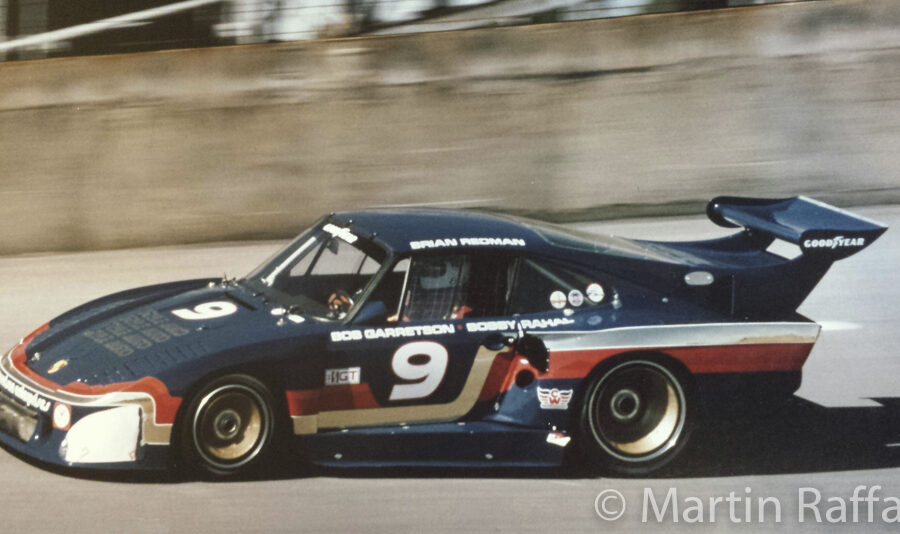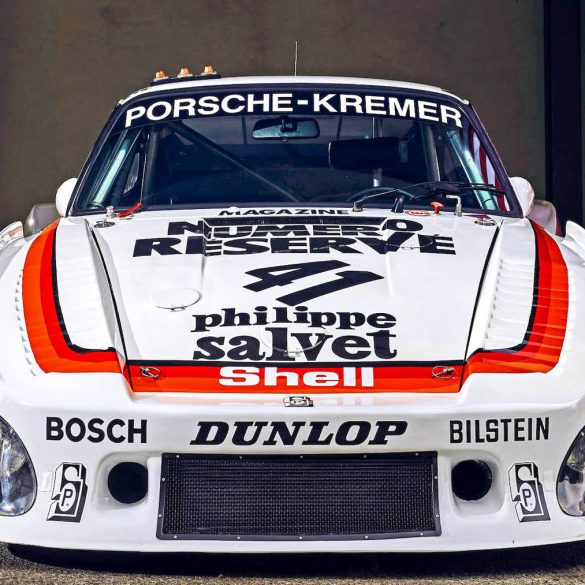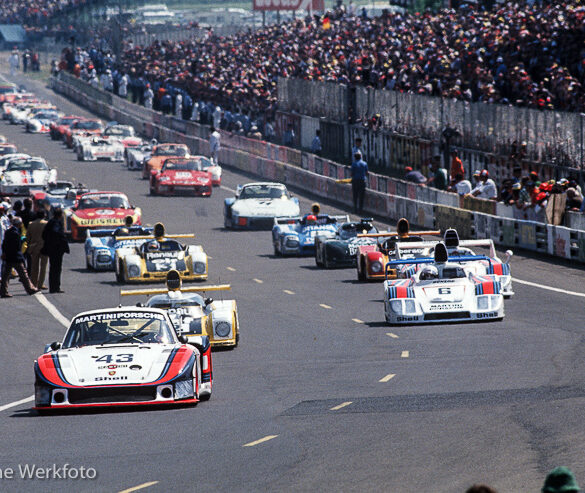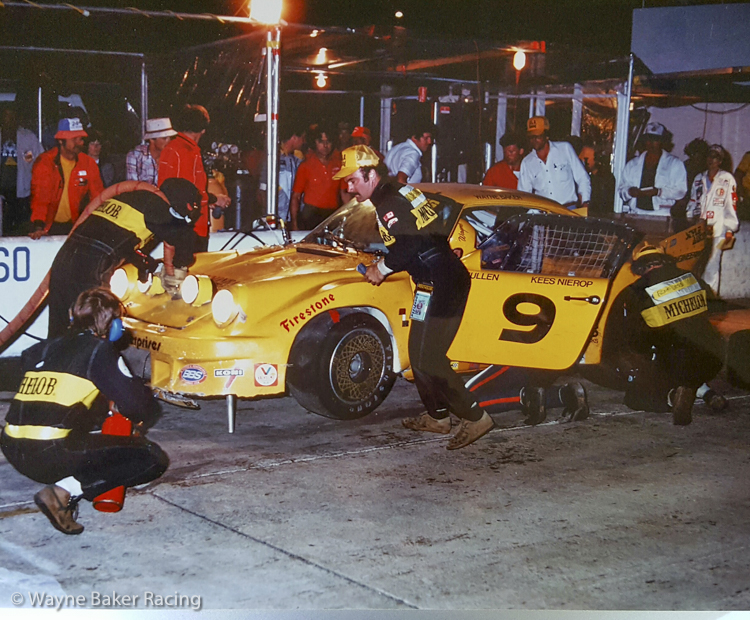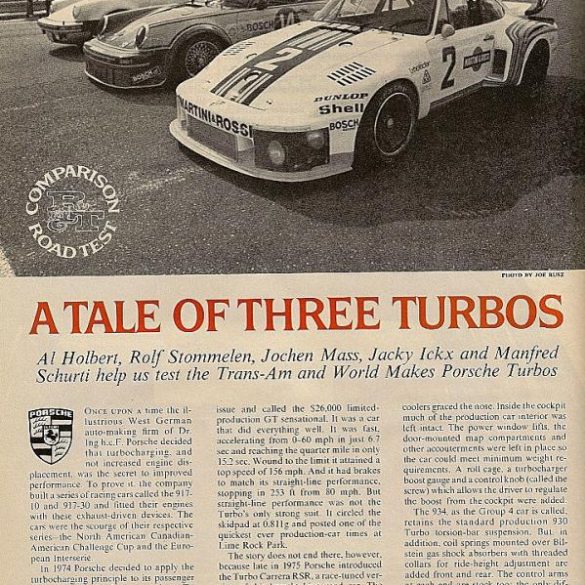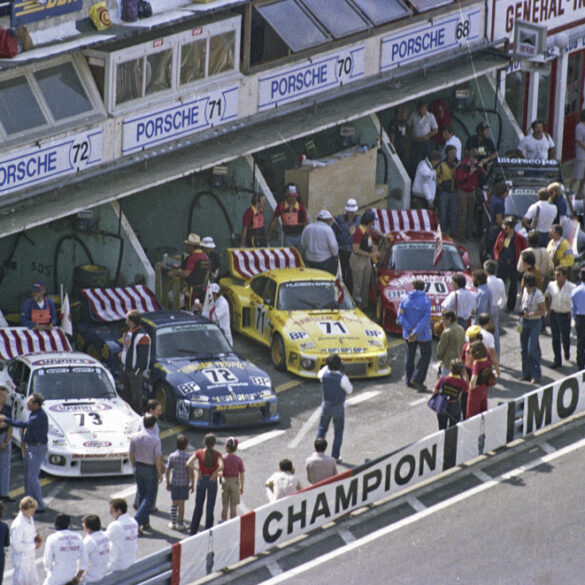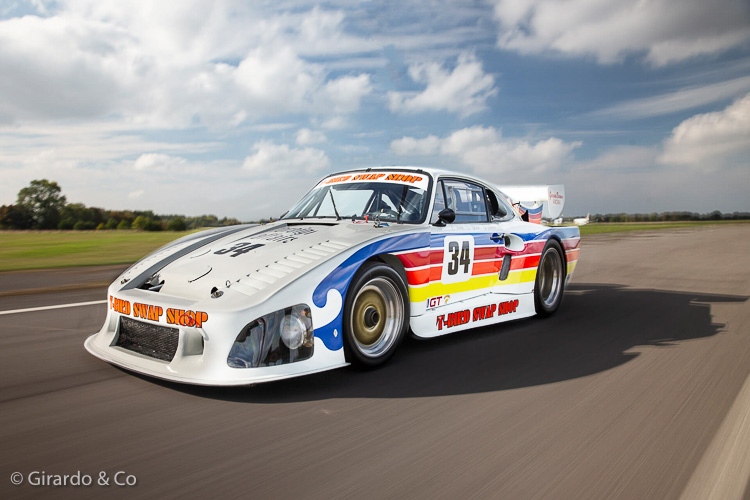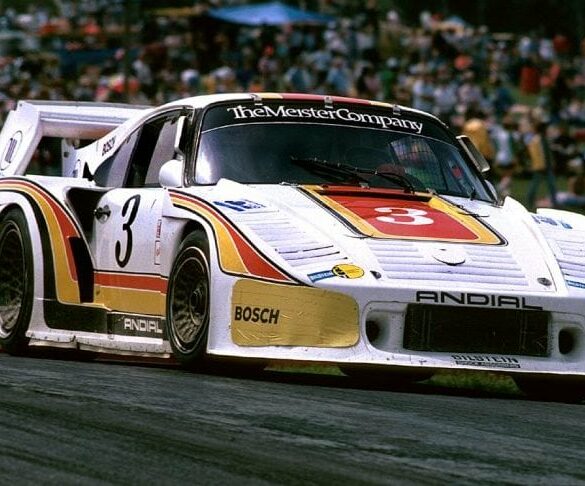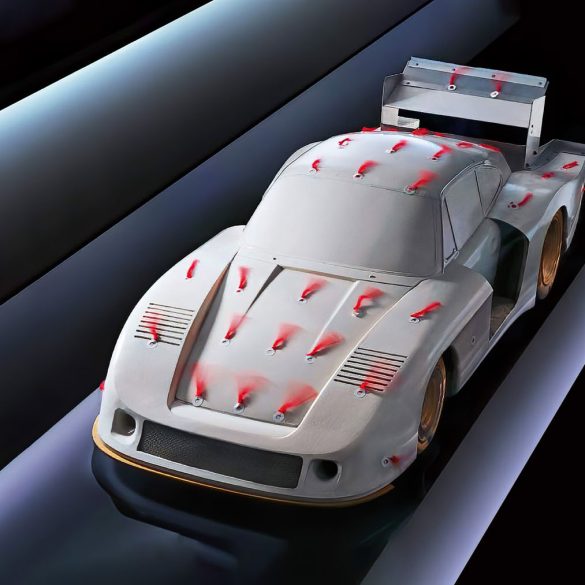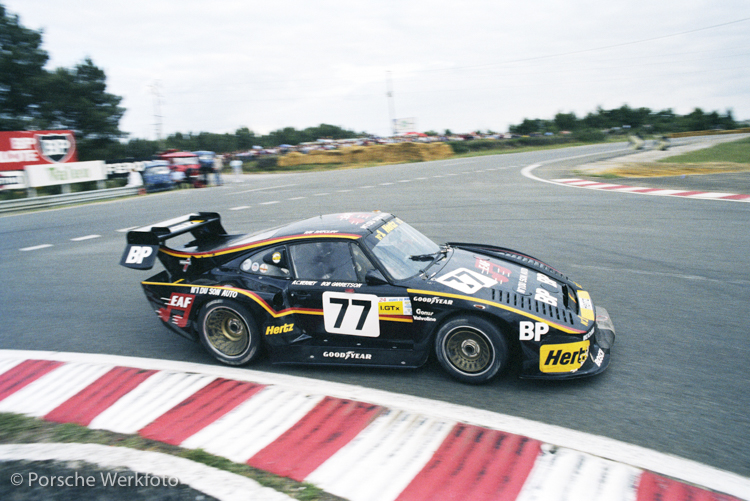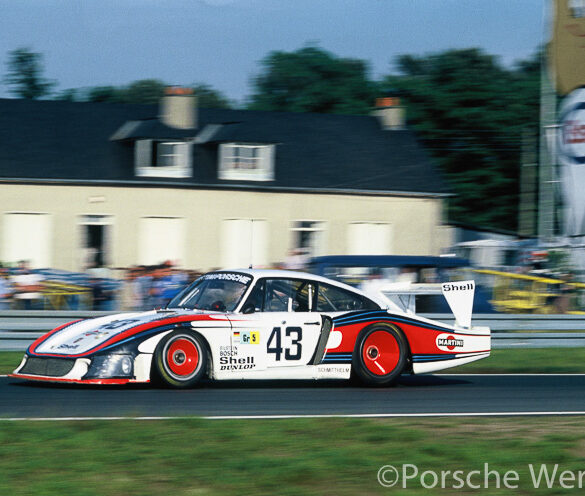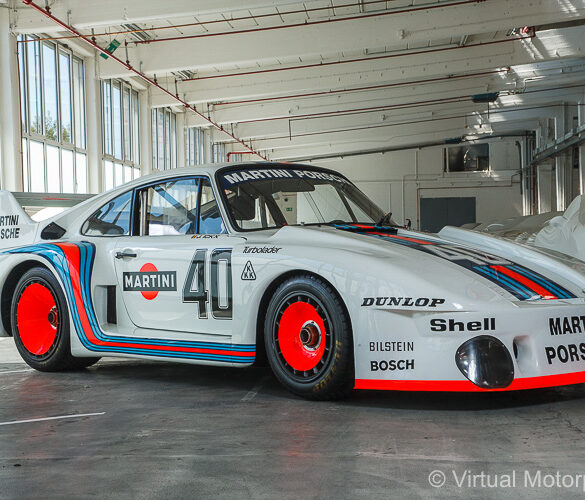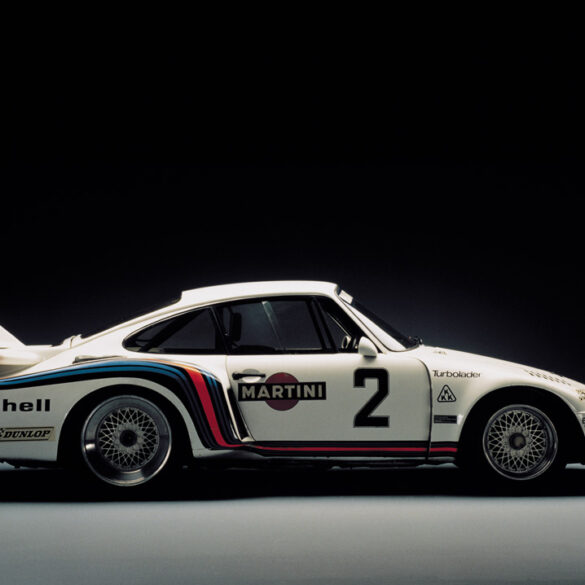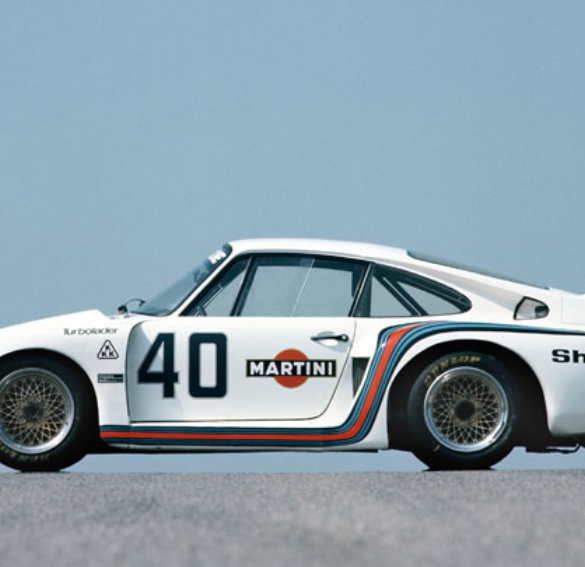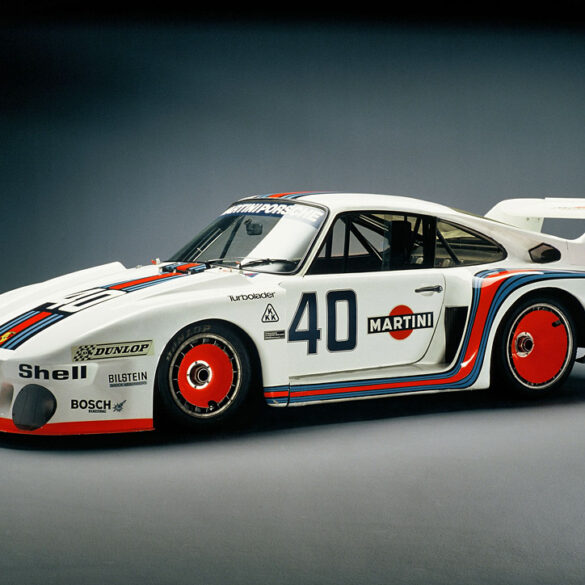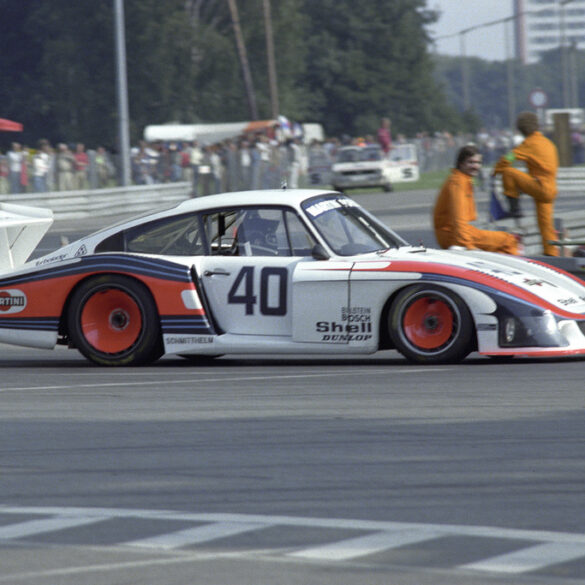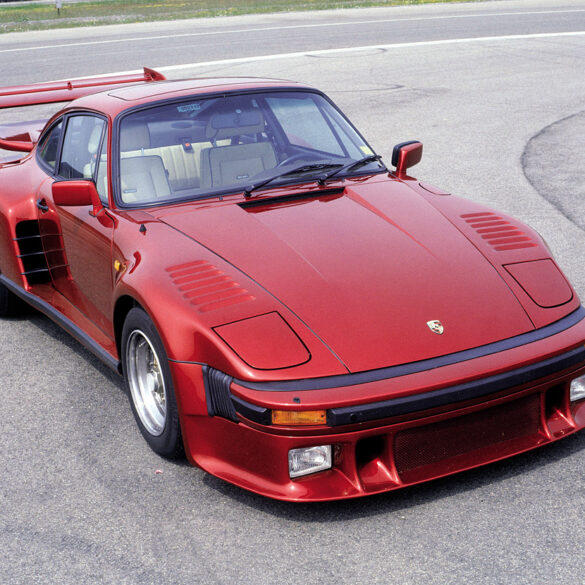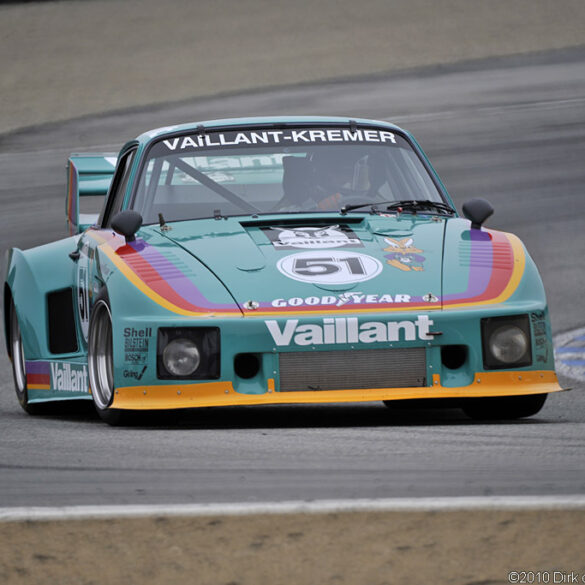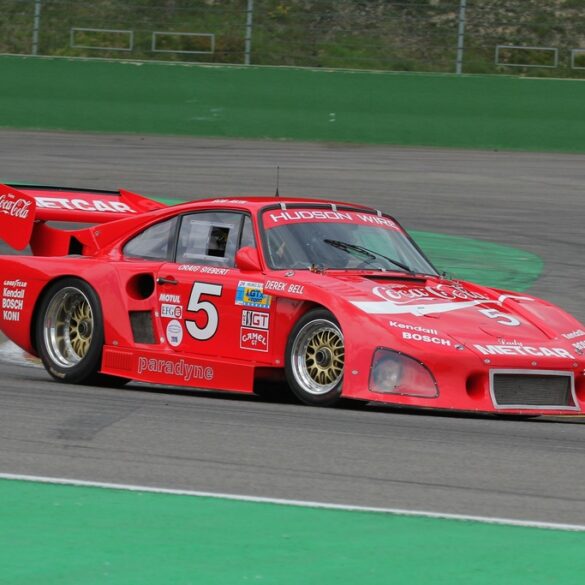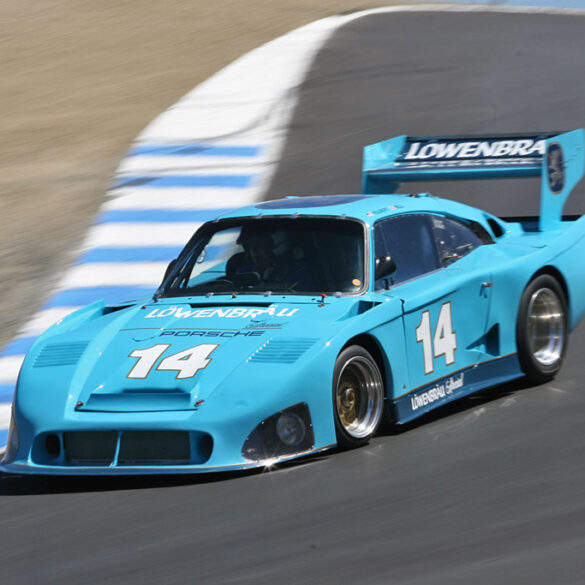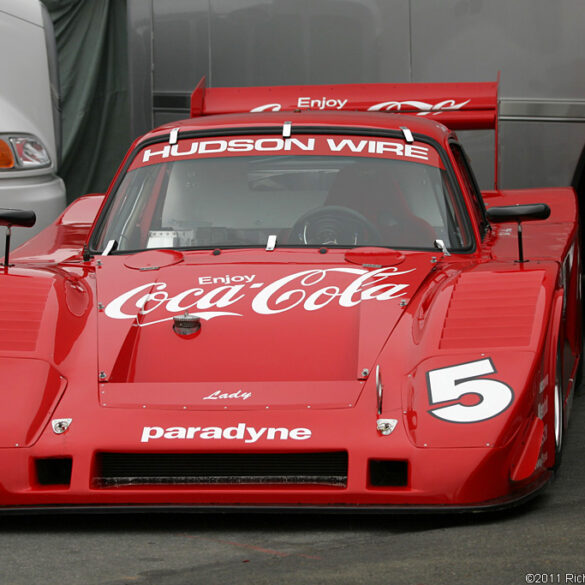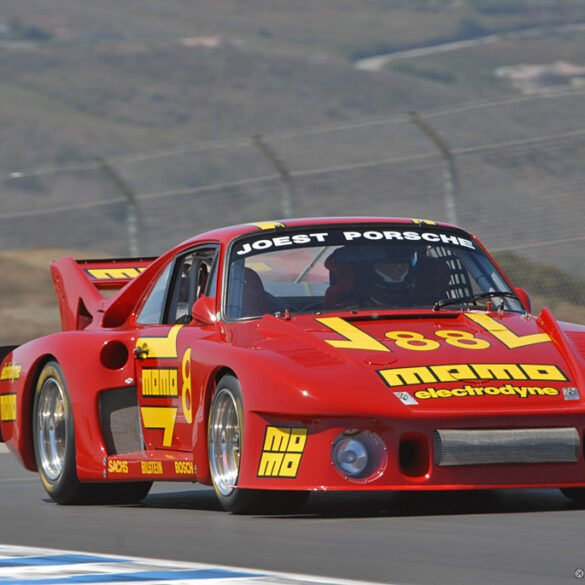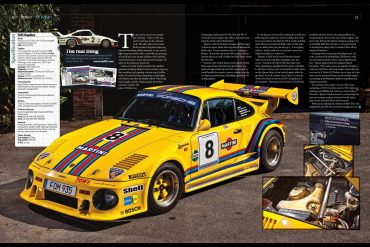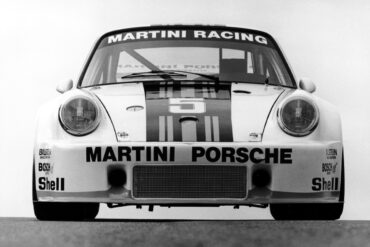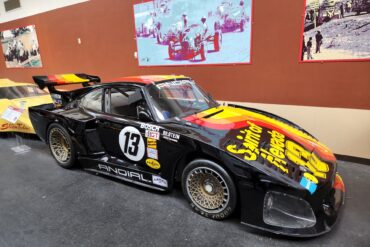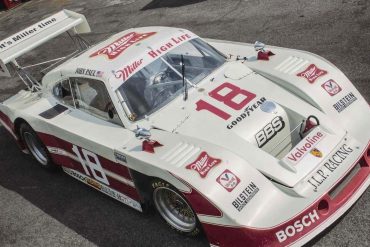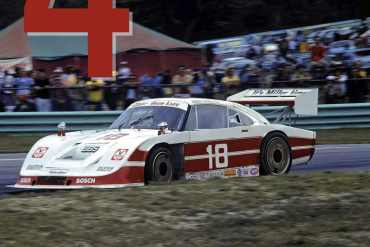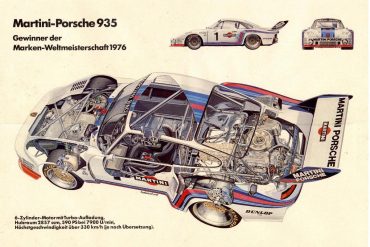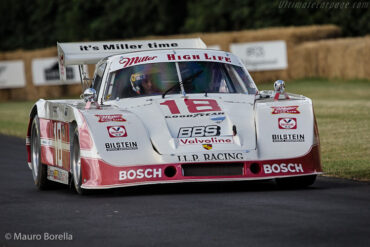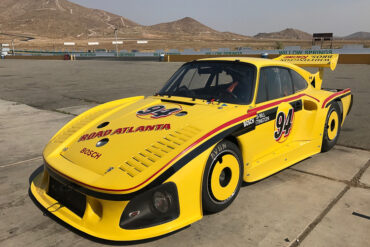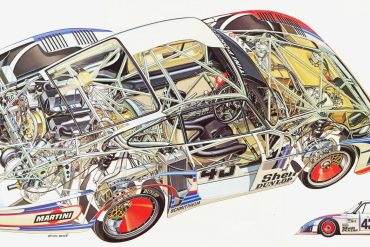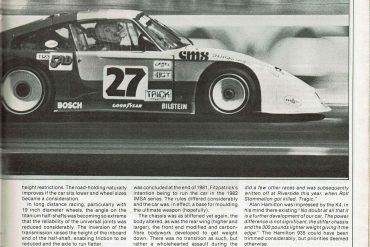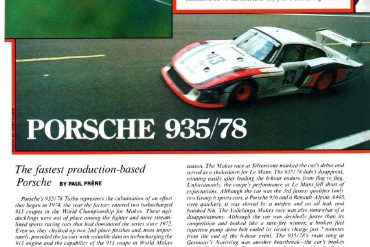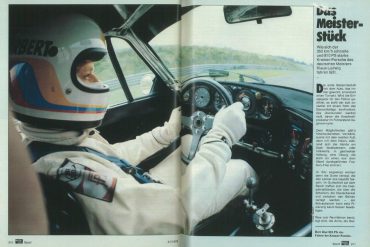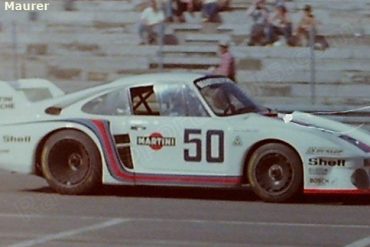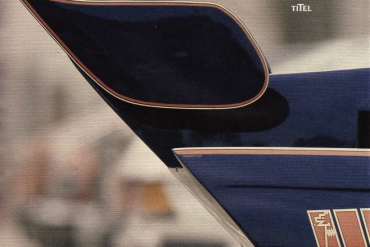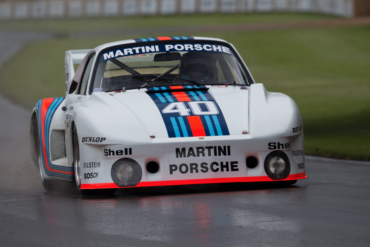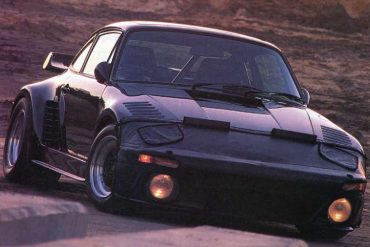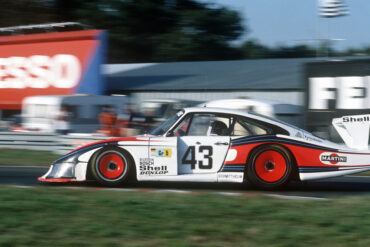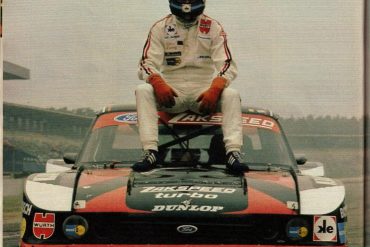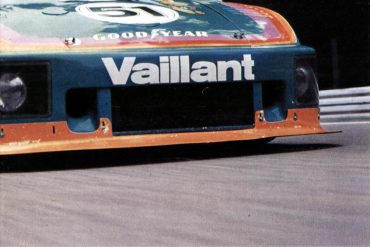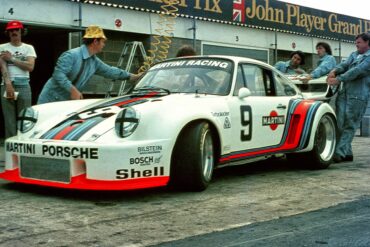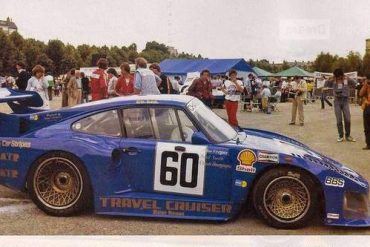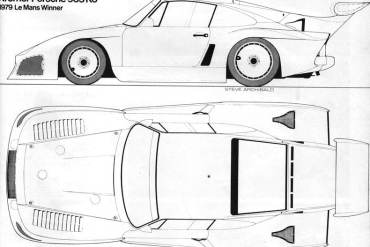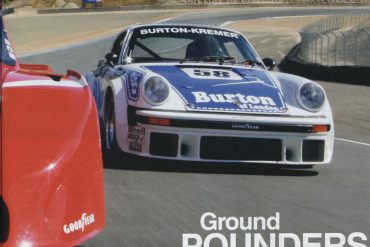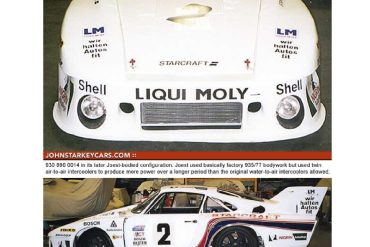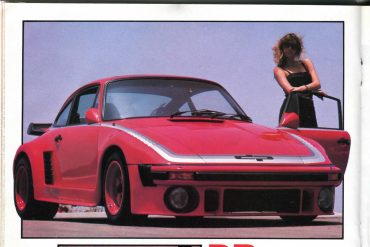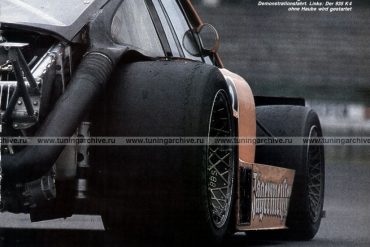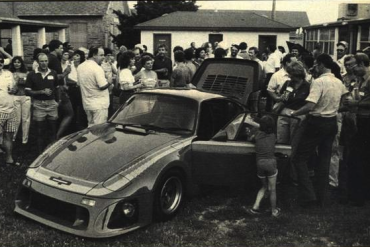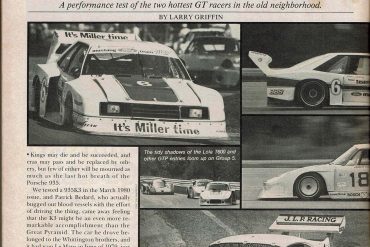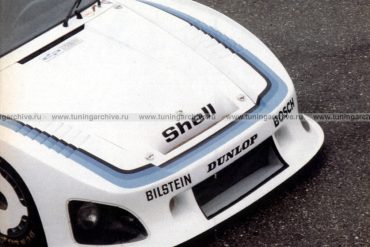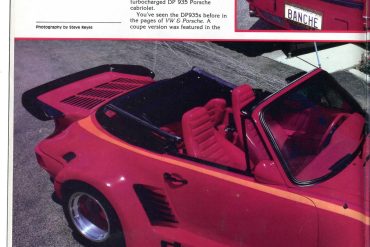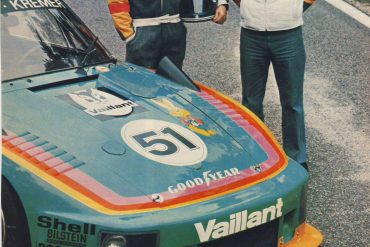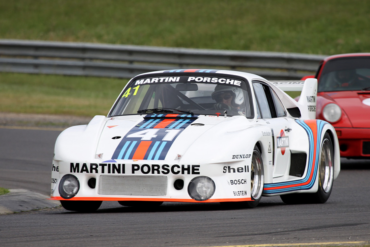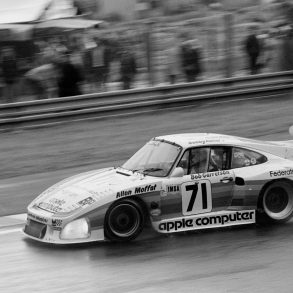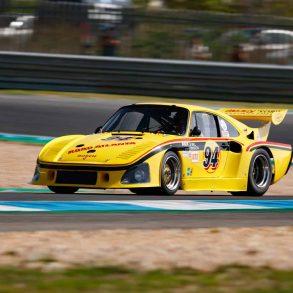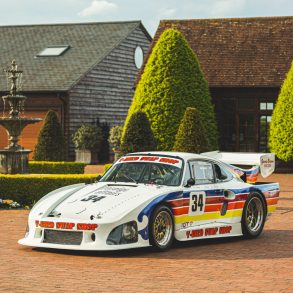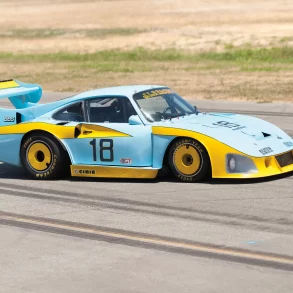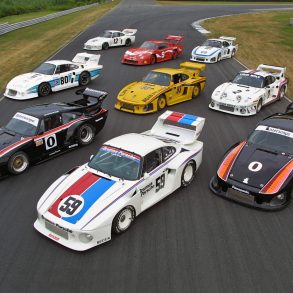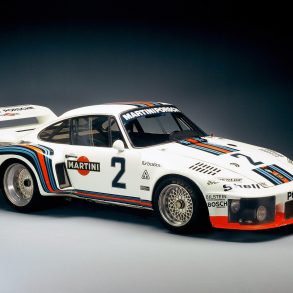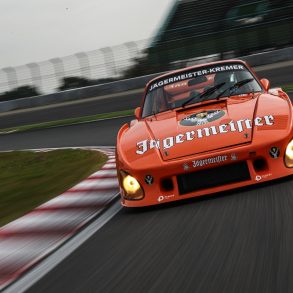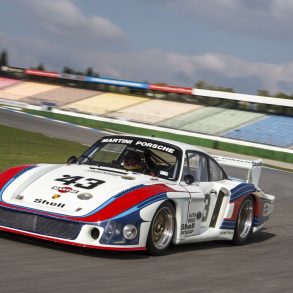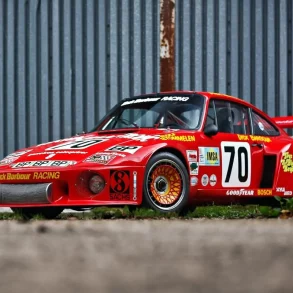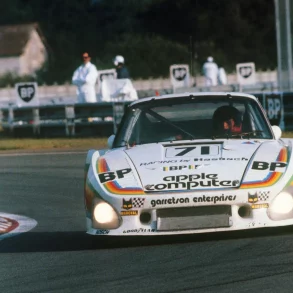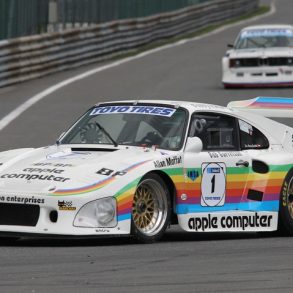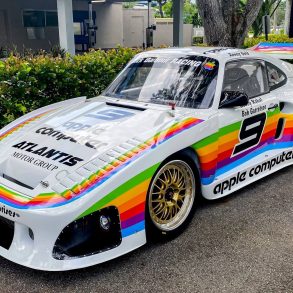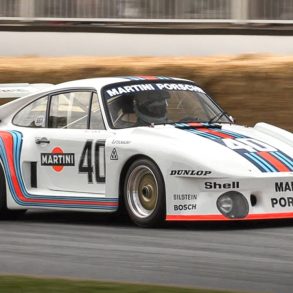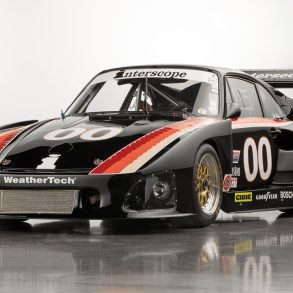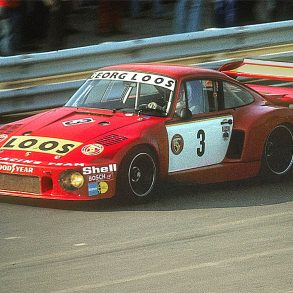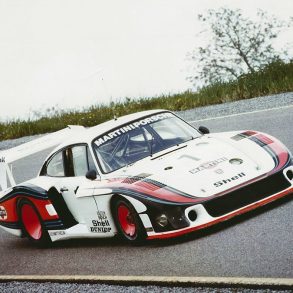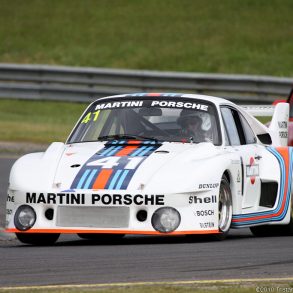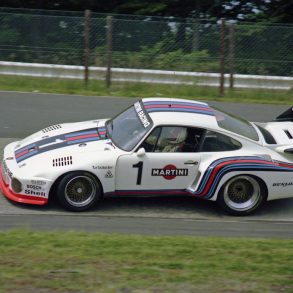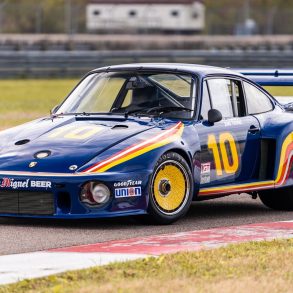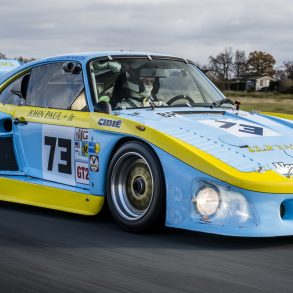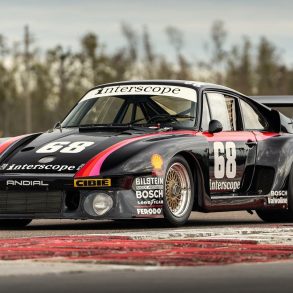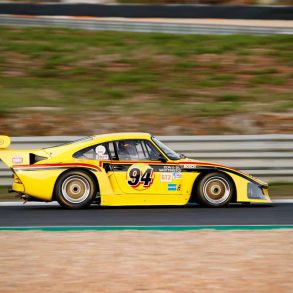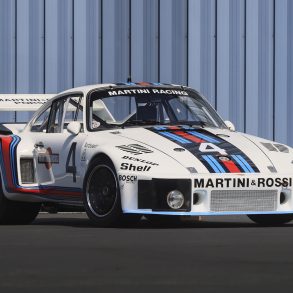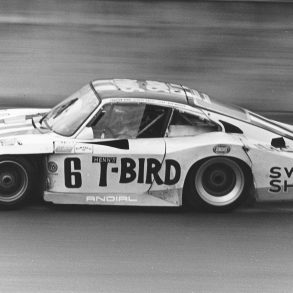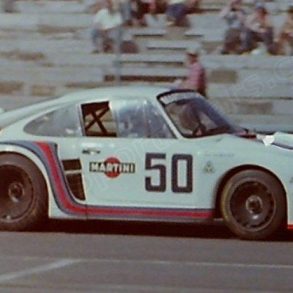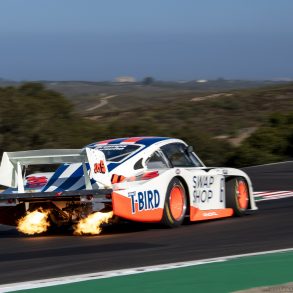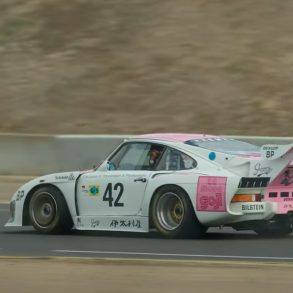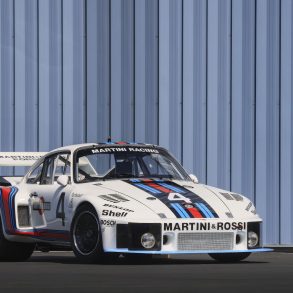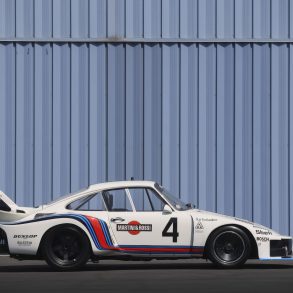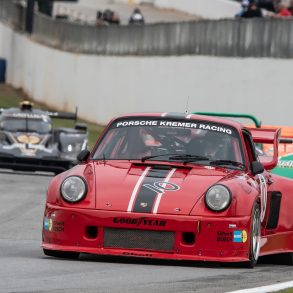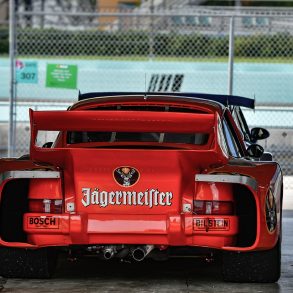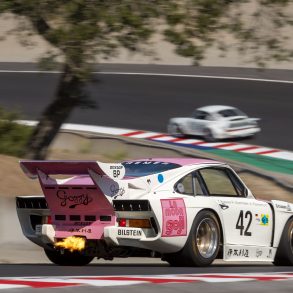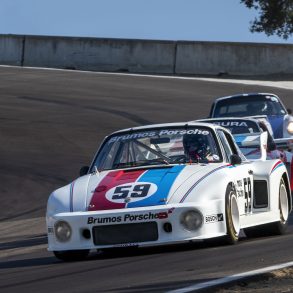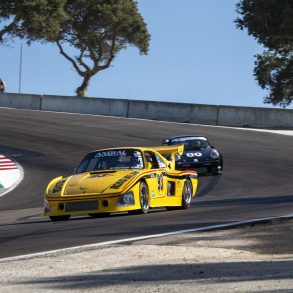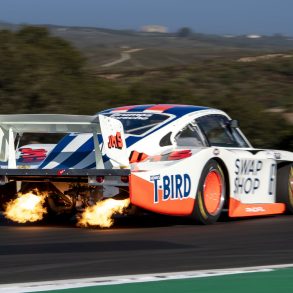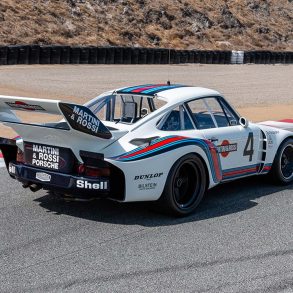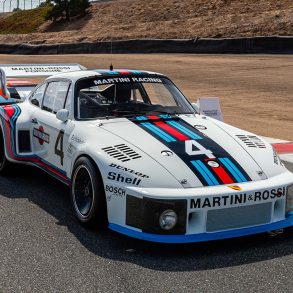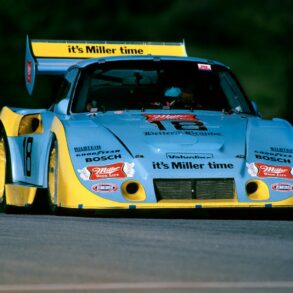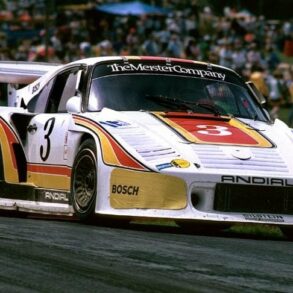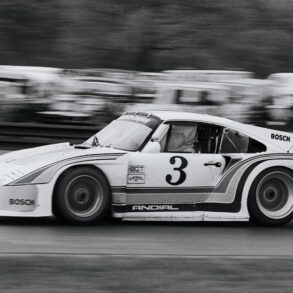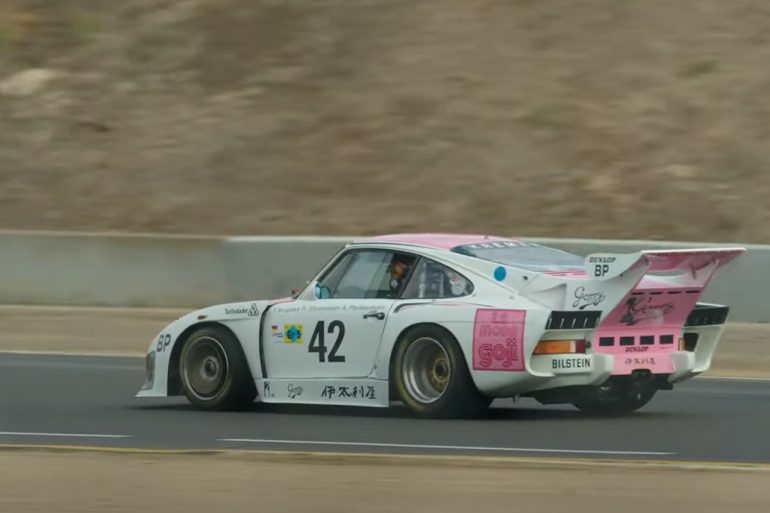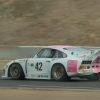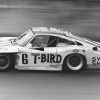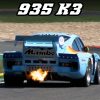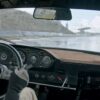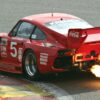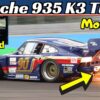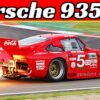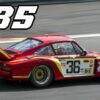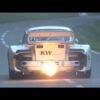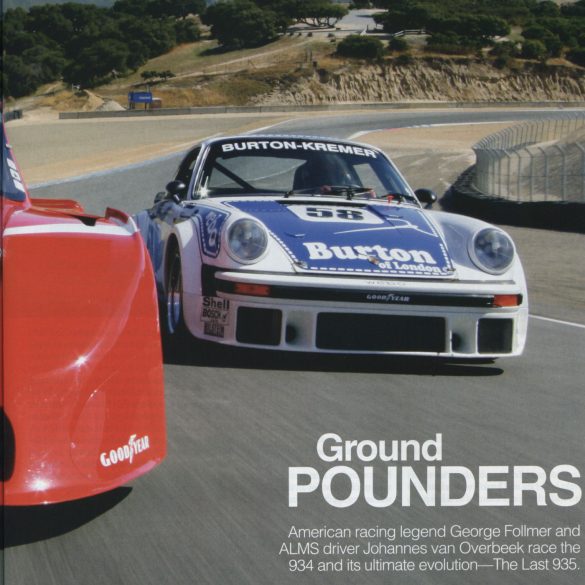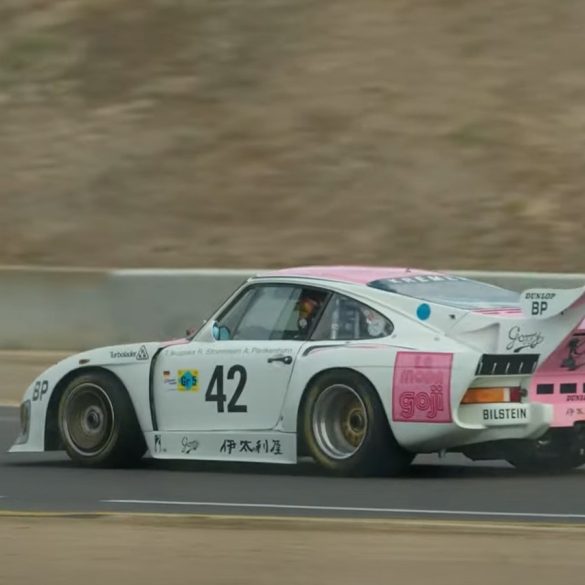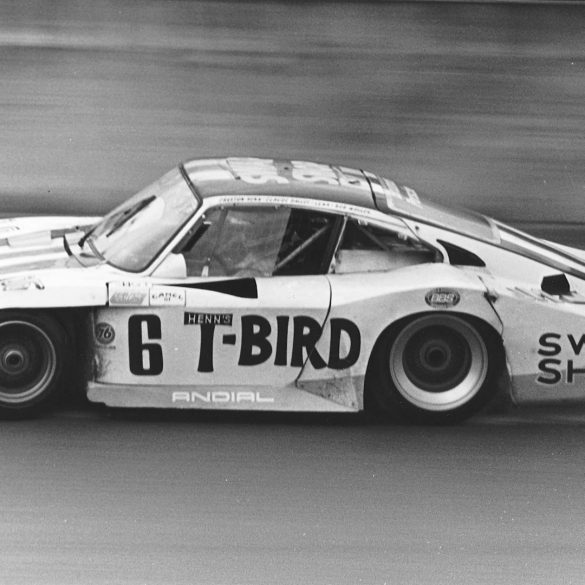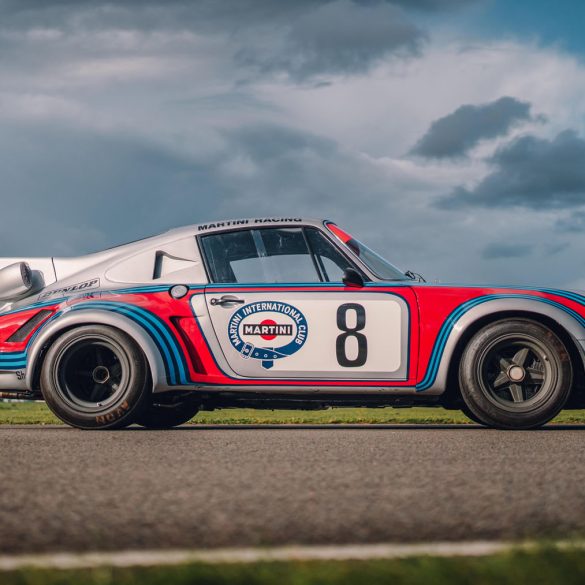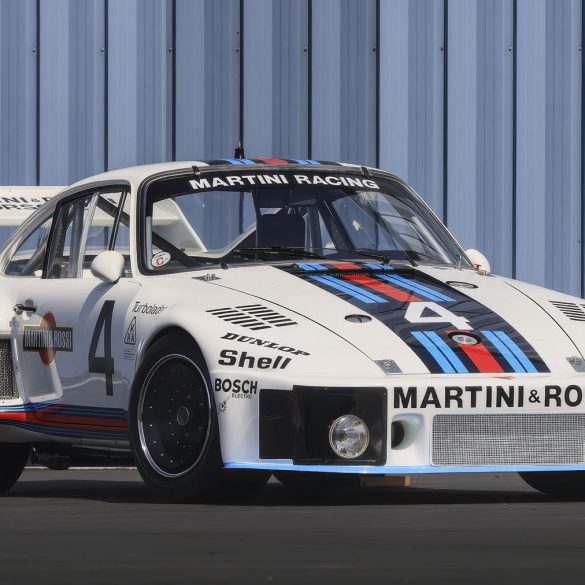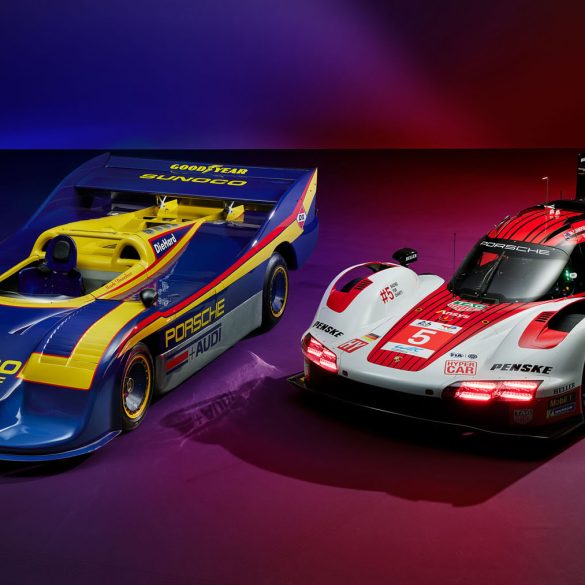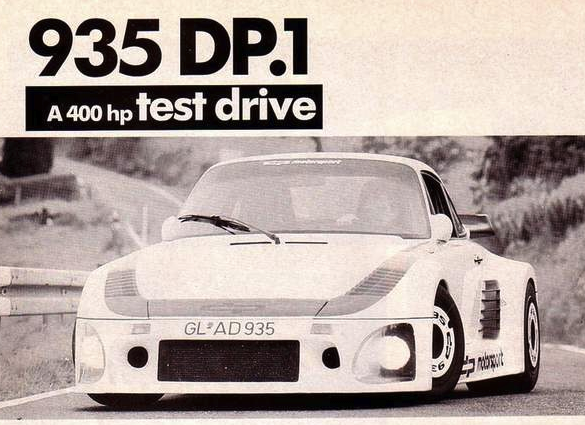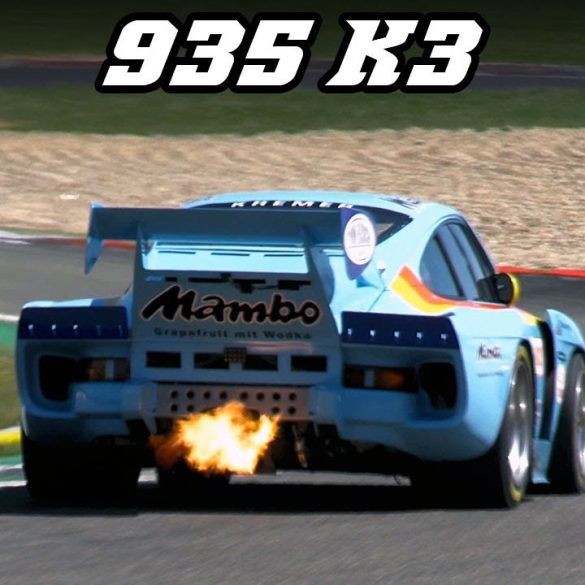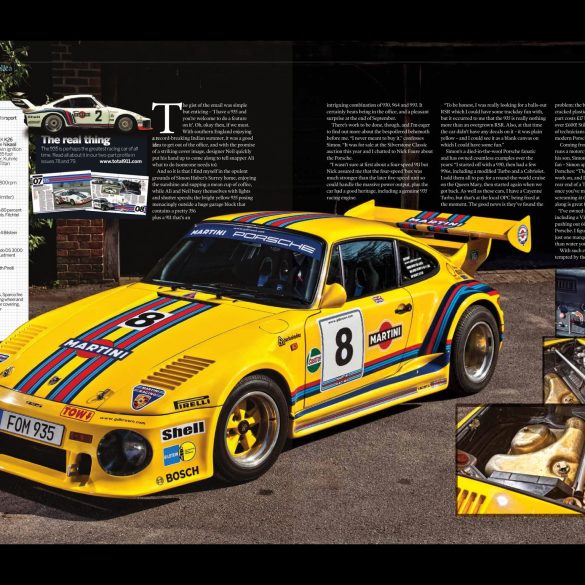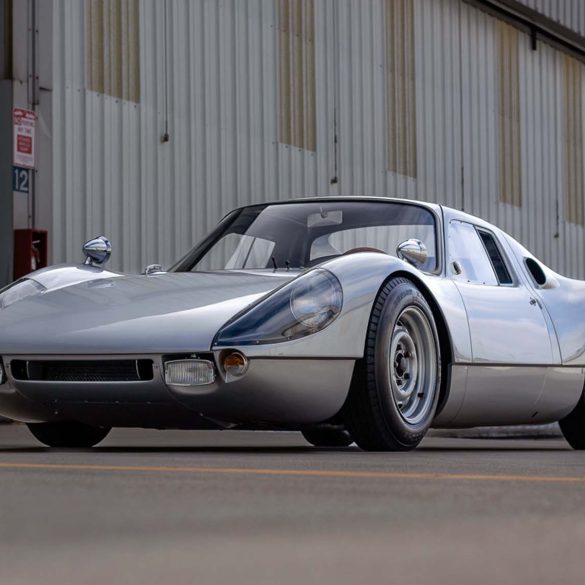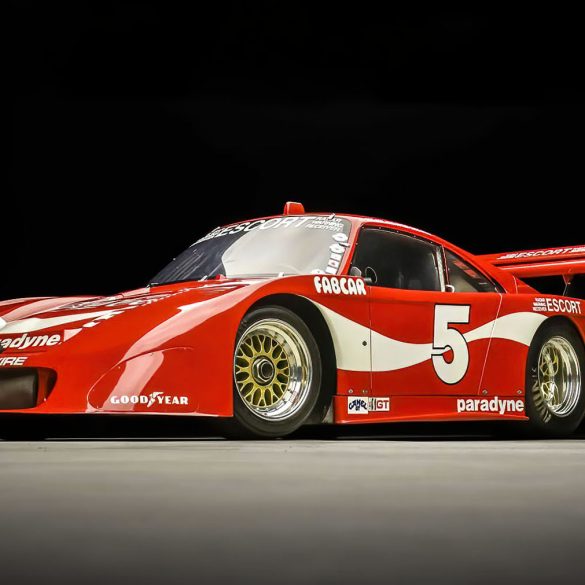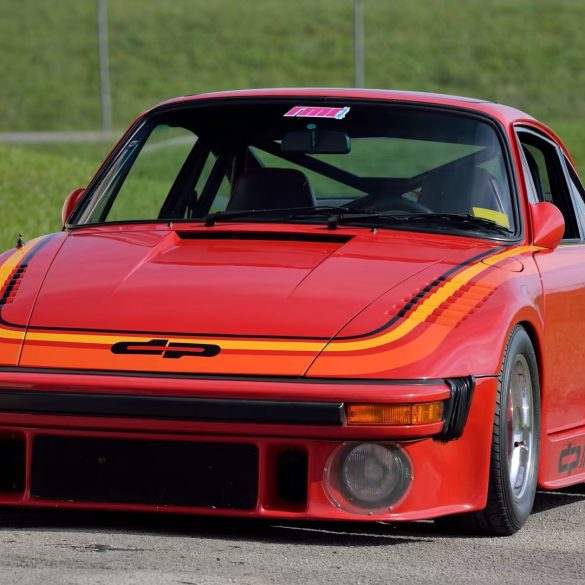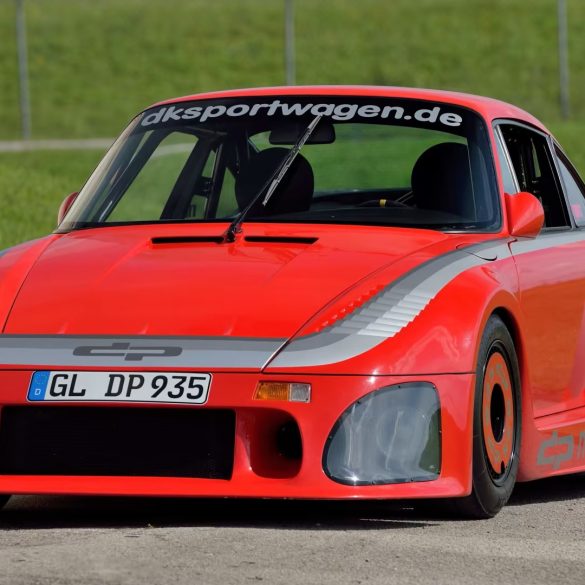Porsche 935 - The Ultimate Guide
The Turbocharged Titan of Group 5 Racing
Model Guides / Featured Stories / Pictures & Videos / Data & Research / FAQs / News & Updates
Porsche 935 Basics
Manufacturer: Porsche
Production Years: 1976 - 1978
Designer: Norbet Singer
Layout: Rear engine, RWD
Engines: 3.0–3.3 L Type 935 twin-turbo Flat 6 & 1.4 L Turbo Flat 7 (Baby)
Transmission: 4-speed manual
Premiere: Mar 21 1976 Mugello, Italy
Predecessor: Carrera RSR (1974)
Successor: Porsche 961
From 1977 into the 1980s, Porsche 935s were the popular choice in Group 5, GTP, and GTX racing both in Europe and North America. Later versions were made by Kremer, Joest, Gaaco and Fabcar left little room for any challenge to Porsche dominance. The culmination of these efforts resulted in a first overall at the 1979 24 Hours of Le Mans.
The 935 was initially offered as version of their 935 for private racing teams that raced alongside the technically superior Martini-sponsored factory cars. These were based of the 1976 the Porsche Carrera RSR 2.1 Turbo which contested the 24 Hours of Le Mans in 1974 provided a basis for the 935. Due to the more relaxed Group 5 regulations, engineer Norbert Singer could drastically alter the outer-bodywork of the standard 930 unitary steel monocoque. This allowed for much larger fender flares and a huge rear wing. Half way through the 1976 season, Porsche relocated the front headlights to the Flachbau or flatnose design. The design retained the 930 Turbo bodyshell which was stiffened by an aluminum roll cage. The attached front and rear sections were made from fiber-glass and 5-inch wheel arches were fitted covering 15-inch tires in the rear. Plexiglass windows and other lightweight construction meant that the car was produced 90 kg underweight which was offset by ballast.
Using the 1.4 equivalency factor given to turbocharged engines, Porsche could assemble a 2.9-liter engine that fit well within the 4-litre restriction. To offset the smaller displacement, a huge KKK turbocharger was fitted which helped the 2808cc flat-6 produce close to 600 bhp. This number varied depending on the boost which ranged from 1.35 and 1.55 bar.The engine used dual-ignition, a 908-style fuel pump, plunger-type fuel injection and spraybar lubrication. Consumption was rated at 4.38 mpg. A knob on the dashboard controlled the boost which could vary the power from a reliable 550 bhp to 650 bhp in sprint mode. Some private teams opted for the larger 2994cc engine which raised power to 630 bhp but they were forced to carry 122 extra lbs of ballast. The suspension and wheels were also drastically upgraded including coil springs, adjustable anti-roll bars, and larger ventilated discs. Naturally, the car was completely stripped and Porsche managed to reduce weight to 900 kg. With ballast the car could then meet the required 970 kg formula.Porsche offered the car again in 1978 with the twin-turbocharged specification and running boards as on the factory team cars. That year IMSA champion was Peter Gregg driving the Brumos Racing 935. The World Championship of Makes was secured by the 935 after winning 7 rounds. The German Nation Championship was also contested by 12 separate 935s of which the Gelo-entered cars were fastest.
Through 1984 the 935 won over 150 races worldwide, including more than 20 class wins. It scored an overall win in the 1979 24 Hours of Le Mans making it one of only 2 cars since 1953 to win at Le Mans overall yet not be in the top prototype class. It also won the 24 Hours of Daytona and the 12 Hours of Sebring six times each. It was also undefeated in the German DRM between 1977 and 1979, posted victories in the IMSA GTX class, and won many races on the famous Nürburgring Nordschleife, including three 1000km Nürburgring. The 935 also took Porsche to victory in the FIA World Championship for Makes each year from 1976 to 1979. In 1980 and 1981, Lancia won the title with their Beta Montecarlo 1.4t, by regularly winning the sub 2.0 L category, and occasionally defeating Porsche in the big category.
In the world of motorsport, some machines are fast, some are successful—and then there are those that become legends. The Porsche 935 falls squarely into the latter category. It didn’t just race—it conquered, redefined, and inspired. Developed in the mid-1970s as a turbocharged monster for FIA Group 5 competition, the 935 would go on to become one of Porsche’s most dominant and iconic race cars, reshaping the landscape of GT racing and leaving an indelible mark on automotive history.
Origins: The Group 5 Opportunity
The Porsche 935 was born out of a regulatory opportunity. In 1976, the FIA launched the Group 5 “Special Production Cars” class, which allowed manufacturers significant leeway in modifying production-based vehicles. While the bodywork had to loosely resemble the base car, nearly everything else—engine, suspension, aerodynamics—could be pushed to the extreme.
Porsche, always one to seize a technical opening, saw Group 5 as the perfect platform to evolve its 911 Turbo (930) into a full-fledged race car. By building on the proven 911 architecture, Porsche could develop a potent machine without starting from scratch—and in doing so, create a bridge between their road cars and race cars that would become legendary.
Design and Engineering: The 911 Unleashed
The first iteration of the Porsche 935, debuting in 1976, took the 911’s core layout and transformed it. Gone was the familiar upright headlamp arrangement—in its place came the now-iconic “slantnose” front, a design initially developed to reduce drag by lowering the front profile and eventually adopted in limited-run production 911s.
Porsche engineers widened the body significantly, allowing for massive racing slicks at the rear and enhanced stability. The chassis was lightened, stiffened, and completely reworked for racing, while the interior was stripped down to the essentials. Under the rear deck lid sat the beating heart of the 935: a turbocharged 3.0-liter flat-six, producing around 600 horsepower—a monumental figure for the mid-1970s.
As the car evolved, so did its performance. Later factory variants would see the engine displacement increased and the turbo systems refined, boosting output to 700+ hp. Turbo lag was pronounced, but once boost hit, the 935 launched forward with ferocity, demanding total commitment from its drivers.
Evolution and Key Variants
The 935’s platform proved so capable that it spawned a variety of versions, each tailored for specific tracks, regulations, or customer teams.
935/76 (Factory debut car)
The original 1976 model, used by the Porsche factory team, introduced the slantnose design and set the template for what would follow. It won the World Championship for Makes in its debut year.
935/77
Further refined aerodynamically and mechanically, including enhancements to the suspension and intercooling systems. Privateer teams began receiving customer cars around this time, allowing the 935 legacy to spread quickly across the globe.
935/78 “Moby Dick”
The most extreme evolution of the car, developed for the 1978 season. The 935/78 featured a long-tail aerodynamic design, a water-cooled cylinder head engine, and a twin-turbocharged 3.2-liter flat-six producing 850+ horsepower. Capable of over 220 mph on the Mulsanne Straight at Le Mans, Moby Dick was fast but also heavy and complex—making it a challenge in tighter, more technical races.
Kremer K-Series (K1, K2, K3, K4)
Among the most famous privateer variants were the Kremer Racing developments. The K3, in particular, was a heavily re-engineered version that shed weight, improved downforce, and ran more reliably than earlier versions. It was a K3 that won the 1979 24 Hours of Le Mans outright, defeating factory prototype teams—an unheard-of feat for a production-based GT car.
Racing Success: An Era of Domination
Few race cars have enjoyed the kind of global, cross-series dominance the 935 achieved. It wasn’t just a winner—it was a category killer, outpacing both GT and prototype rivals for years.
World Championship for Makes titles in 1976, 1977, and 1978
24 Hours of Le Mans overall victory in 1979 (Kremer K3)
Multiple wins in IMSA GT Championship and Deutsche Rennsport Meisterschaft (DRM)
24 Hours of Daytona and 12 Hours of Sebring victories
Dominance across national series and club racing worldwide
What made the 935 so effective wasn’t just its speed—it was its combination of performance, reliability, and adaptability. Privateer teams could purchase a 935 from Porsche and immediately become contenders at top-level endurance events.
Technology and Driving Experience
The 935 was not an easy car to tame. Early models were infamous for their turbo lag, delivering nothing and then suddenly everything—a power spike that could unsettle even experienced drivers. But in the hands of masters like Jacky Ickx, Rolf Stommelen, Bob Wollek, and John Fitzpatrick, the car was nearly unbeatable.
Technologically, the 935 was a turbocharging pioneer. Porsche used it to refine its understanding of boost control, intercooling, and thermal management—technologies that would later trickle into its road cars and dominate future racing platforms like the 956 and 962.
Legacy and Rebirth
The Porsche 935's legacy is vast. It redefined what a production-based race car could achieve and inspired generations of racers and engineers. Its silhouette—low, wide, and menacing—is etched into motorsport history as the very image of 1970s and ’80s GT racing.
In 2018, to celebrate 70 years of Porsche motorsport, the company unveiled a modern Porsche 935 tribute—a limited-run, track-only version based on the 911 GT2 RS Clubsport. It featured a retro body design inspired by the original Moby Dick, paired with modern engineering and a 700-hp twin-turbo flat-six. While it wasn't built for competition, it was a loving homage to one of Porsche’s most iconic creations.
A Turbocharged Legend
The Porsche 935 wasn’t just a race car—it was an era. It bridged the gap between production car and prototype, dominated global racing series, and introduced a new generation of turbocharged innovation to motorsport. With a career that spanned nearly a decade, countless victories, and influence that persists to this day, the 935 remains one of the greatest racing cars Porsche—or anyone—has ever built.
Whether on the track, in museums, or reborn as modern-day tributes, the spirit of the 935 lives on—loud, wide, and boosted.
Porsche 935 Data & Research
We dig into some of the data surrounding the Porsche 935, including production numbers, specifications, chassis numbers and much more.
Porsche 935 Pictures, Galleries & Wallpapers
Step into the visual legacy of a racing icon with our Porsche 935 Pictures, Galleries & Wallpapers section—featuring high-resolution images, rare historic shots, and stunning close-ups that capture the raw power, aggressive styling, and unforgettable presence of Porsche’s turbocharged legend.
Porsche 935 Videos
Experience the Porsche 935 in these engaging and awesome videos. We recommend you turn up the volume to be transported back to the days of insane racing cars.
Porsche 935 FAQs
Whether you're a seasoned enthusiast or just discovering the legacy of this incredible machine, our FAQ section is here to answer your biggest questions.
What is the Porsche 935?
The Porsche 935 is a legendary turbocharged race car developed by Porsche in the mid-1970s for Group 5 racing, also known as the “Special Production Car” category. Based on the 911 Turbo (930), the 935 was extensively modified for competition, featuring wide-body aero, a low-drag “slantnose” front end, and a massively powerful turbocharged flat-six engine producing up to 850 horsepower in later versions.
Introduced in 1976, the 935 quickly became a dominant force in international motorsport. It won the World Championship for Makes three years in a row (1976–1978), earned countless victories in the IMSA GT Championship, and famously took overall victory at the 1979 24 Hours of Le Mans—an extraordinary feat for a production-based car.
Throughout its life, the 935 evolved into numerous factory and privateer variants, including the radical 935/78 “Moby Dick” and the highly successful Kremer K3. Its blend of speed, endurance, and turbocharged aggression made it one of the most iconic and successful race cars in Porsche’s history.
What races did the Porsche 935 win?
The Porsche 935 achieved remarkable success in endurance racing during the late 1970s and early 1980s. Notably, it secured an overall victory at the 1979 24 Hours of Le Mans, marking a significant achievement for a production-based car competing against prototype entries. Additionally, the 935 dominated other major endurance events, including multiple wins at the 24 Hours of Daytona and the 12 Hours of Sebring. Its consistent performance contributed to Porsche clinching the World Championship for Makes titles in 1976, 1977, and 1978. Overall, the Porsche 935 amassed over 150 race victories worldwide by 1984, solidifying its legacy as one of Porsche's most successful and iconic race cars.
What racing success did the Porsche 935 achieve?
The Porsche 935 enjoyed extraordinary racing success from its debut in 1976 through the early 1980s, becoming one of the most dominant GT race cars in motorsport history. Designed for the FIA Group 5 “Special Production Car” category, the 935 racked up over 150 race victories worldwide, including major wins in the world’s most prestigious endurance events.
Key Racing Achievements of the Porsche 935:
24 Hours of Le Mans (1979). Overall victory by the Kremer Racing 935 K3, driven by Klaus Ludwig and the Whittington brothers. This was a landmark win—the only time a production-based GT car won Le Mans outright against prototypes.
World Championship for Makes. Porsche won the championship three consecutive years with the 935: 1976, 1977 and 1978
IMSA GT Championship (USA). Dominated the IMSA GTP and GTX classes, particularly from 1977 to 1982. Secured multiple Drivers’ and Manufacturers’ Championships, including titles for legendary drivers like Peter Gregg and Al Holbert.
24 Hours of Daytona. The 935 won Daytona six times between 1978 and 1984, often with privateer teams like Interscope Racing, Kremer Racing, and Andial.
12 Hours of Sebring. Scored several victories at Sebring, further proving its durability and pace in grueling endurance conditions.
Deutsche Rennsport Meisterschaft (DRM). The 935 also dominated Germany’s premier touring car series, the DRM, with factory and privateer teams winning numerous races and championships.
What engine did the Porsche 935 use?
The Porsche 935 was powered by a series of turbocharged flat-six engines, derived from the 911 Turbo (930) platform but heavily modified for racing. In its earliest factory iterations, such as the 935/76 and 935/77, the car used a 3.0-liter air-cooled flat-six equipped with a single KKK turbocharger. These engines produced between 600 and 630 horsepower, depending on boost levels and race setup. Though based on Porsche’s production engine architecture, the racing versions were extensively reworked with strengthened internals, optimized cooling, and advanced fuel delivery systems.
As the 935 evolved, so did its engine. The most extreme example was the 935/78, famously nicknamed "Moby Dick." This version featured a 3.2-liter twin-turbo flat-six with water-cooled cylinder heads—a major innovation for Porsche at the time. This engine produced up to 845 horsepower in qualifying trim, making the 935/78 one of the most powerful race cars of its era. It represented a significant leap in performance and technology, using improved boost control, high-pressure fuel injection, and advanced materials to handle the enormous stresses of endurance racing.
Privateer teams like Kremer Racing, Interscope, and JLP Racing also developed their own versions of the 935 engine to compete in different series such as IMSA, DRM, and the World Championship for Makes. These customer cars featured engine displacements ranging from 2.85 to 3.2 liters, depending on regulations, and power outputs often exceeded 700 horsepower—with some reaching over 800 hp through aggressive tuning and turbo boost.
One of the defining characteristics of the 935's engine was its brutal power delivery. Turbo lag was significant, especially in early versions, but once the boost came on, the car delivered explosive acceleration. Combined with Porsche's legendary dry-sump lubrication, lightweight rotating assemblies, and bulletproof reliability, the 935 engine was not only fast but capable of enduring the grueling demands of 12- and 24-hour endurance races.
What made the 935 so special?
The Porsche 935 was special because it was the perfect storm of raw power, engineering ingenuity, and racing dominance—wrapped in a wildly aggressive, unforgettable silhouette. At its core, the 935 took everything great about the 911 Turbo and pushed it to the absolute limits of what was possible within the FIA's Group 5 “Special Production Car” rules. The result wasn’t just a race car—it was a turbocharged icon that changed the face of GT racing in the late 1970s and early ’80s.
One of the things that made the 935 stand out was how Porsche cleverly exploited the rulebook. The car's signature “slantnose” front end and wide bodywork weren’t just for looks—they were meticulously engineered to reduce drag, increase downforce, and fit enormous tires. Porsche took advantage of every loophole to make the car faster and more stable, while still technically maintaining the silhouette of a 911. It was a prime example of the brand’s ability to out-think as much as out-build the competition.
Then there was the engine. The 935’s turbocharged flat-six was a force of nature. With power outputs ranging from 600 to over 800 horsepower depending on the variant and tuning, it delivered ferocious acceleration and astonishing top speeds—especially in versions like the 935/78 "Moby Dick." While early models had brutal turbo lag, that characteristic became part of the car's legendary mystique, demanding skill and courage from its drivers. Few cars were as explosive, unforgiving, and thrilling to race.
Beyond the specs and performance, what truly elevated the 935 was its racing pedigree. It didn’t just win races—it dominated, claiming overall victories at Le Mans, Daytona, Sebring, and dozens of other top-tier events. It was a machine that privateers could buy, tune, and use to beat factory prototypes—something almost unheard of in motorsport. The 935 blurred the line between GT car and prototype, and it did so while forging a legacy of innovation, aggression, and pure racing glory that still resonates today.
In the end, the Porsche 935 was more than just fast—it was fearless, strategic, and completely ahead of its time. It’s remembered not just for what it accomplished, but for how it embodied Porsche’s relentless pursuit of perfection and its bold, unapologetic approach to winning.
How fast was the Porsche 935?
The Porsche 935 was exceptionally fast—especially for a car based on a production platform—and it pushed the limits of performance in its era. Depending on the specific version and setup, the 935 could reach top speeds between 200 and 225 mph (322–362 km/h), with acceleration and cornering performance that rivaled full-blown prototypes.
The most extreme factory version, the 935/78 “Moby Dick,” was built for high-speed tracks like Le Mans. With its aerodynamic long-tail bodywork and a twin-turbocharged 3.2-liter flat-six engine producing up to 845 horsepower, it was capable of exceeding 225 mph (362 km/h) on the Mulsanne Straight—putting it in the same league as the top prototypes of the time.
Even earlier versions, like the original 935/76 and 935/77, were no slouches. With around 600–650 horsepower and significantly lighter weight than the road-going 911, they could reach 200+ mph (322 km/h) and accelerate from 0–60 mph in under 3.5 seconds, depending on gearing and turbo setup.
What made the 935 particularly exciting (and terrifying) was its explosive turbocharged power delivery. The early cars were known for their fierce turbo lag—virtually nothing, then everything. Once the boost hit, the car would rocket forward with brutal force, making it a true handful even for the most experienced drivers.
In short, the Porsche 935 wasn’t just fast—it was ferociously fast, with straight-line speed and race pace that overwhelmed much of the competition. It helped redefine what a GT-based race car could achieve, earning its place as one of the quickest and most iconic machines of its era.
What nickname did the Porsche 935 have and why?
The most famous nickname for the Porsche 935 is “Moby Dick,” and it was given specifically to the 935/78—the most extreme, factory-built evolution of the car.
The nickname came from its long, whale-like tail, elongated bodywork, and massive rear wing, which gave it a striking and somewhat beastly appearance. Combined with its all-white livery during its debut at the 1978 24 Hours of Le Mans, the car immediately reminded observers of Herman Melville’s legendary white whale, Moby-Dick. Journalists and fans embraced the comparison, and the name stuck.
"Moby Dick" wasn’t just about looks—it was an engineering monster, too. With a 3.2-liter twin-turbocharged flat-six producing up to 845 horsepower, a long-tail aero package designed for top speed, and partially water-cooled cylinder heads, it was capable of reaching speeds over 225 mph (362 km/h) on the Mulsanne Straight. Though it was heavy and only raced briefly, its presence was unforgettable.
The nickname has since become iconic—so much so that Porsche's 2018 tribute car, built on the 911 GT2 RS Clubsport chassis, was directly inspired by Moby Dick, both in design and spirit.
How many Porsche 935s were made, and what are they worth today?
Porsche produced a limited number of factory race cars during the original period. Additionally, private teams like Kremer Racing developed their own versions, such as the K3, of which 13 complete cars were built. Determining the exact number of original 935s is challenging due to the combination of factory-built cars, privateer constructions, and continuous modifications over the years. As for current market values, original Porsche 935s are rare and highly sought after, often commanding prices in the multi-million-dollar range, depending on their racing history and condition. For instance, a 1980 Porsche 935 K3 is listed for approximately $1.07 million and we've seen several go for much more.
Join Our Porsche Community
Sign up for our weekly Porsche newsletter. The latest Porsche news, rumors, reviews and more delivered to your inbox. Cool Porsche stuff perfect for the flat-six obsessed.


